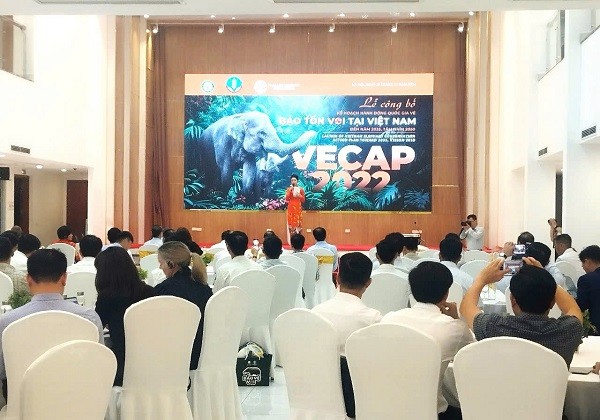(VOVWORLD) - The Ministry of Agriculture and Rural Development has announced the Vietnam Elephant Conservation Action Plan to 2035, with a vision to 2050. It’s an important milestone in the effort to protect elephants, increase community engagement in elephant protection, and develop policies to ensure the survival and sustainable development of elephants in Vietnam.
 The ceremony announces the Vietnam Elephant Conservation Action Plan to 2035, with a vision to 2050. (photo: mard.gov.vn) The ceremony announces the Vietnam Elephant Conservation Action Plan to 2035, with a vision to 2050. (photo: mard.gov.vn) |
From approximately 2,000 elephants discovered in the 1980s, the Asian elephant population in Vietnam has declined to fewer than 200 elephants in the wild. The decline has affected biodiversity and caused ecological imbalance. Enhancing its effort to protect elephants, Vietnam has launched the Elephant Conservation Action Plan to 2035, with a vision to 2050, a cooperative program between the Department of Forestry of the Ministry of Agriculture and Rural Development and the Humane Society International (HSI).
Doan Hoai Nam, Deputy Director of the Department of Forestry of the Ministry of Agriculture and Rural Development, said: “The Action Plan is built on the experience of international experts, community consultants, managers, and scientists. We believe that the Plan will achieve its goals.”
Tham Hong Phuong, National Director of HIS Vietnam, praised Vietnam’s effort to protect wild life. “The Vietnamese government has paid great attention to elephant conservation. Vietnam is one of 13 countries that still have Asian elephants. We welcome the Vietnamese government’s elephant conservation efforts.”
The Central Highlands province of Dak Lak is the land of elephants in Vietnam. Nguyen Cong Chung, Deputy Director of Dak Lak’s Elephant Preservation Center, says the province is developing an elephant-friendly tourism model.
“Dak Lak province has been supported by Animals Asia to transition from elephant-riding tourism to a more elephant-friendly tourism model from 2023 to 2026. The domesticated elephants are released into the wild with the mahouts following them to see how they eat and guard them from any danger. In the wild, the elephants can eat the plants they like,” said Chung.
The Action Plan sets out 33 groups of solutions and actions for wild elephants and 21 groups of solutions and actions for captive elephants to conserve and increase the number of elephants and promote harmonious coexistence between elephants and humans. Long-term goals include expanding the protected areas, strengthening anti-poaching measures, and developing ecotourism that supports conservation and promotes the local economy.